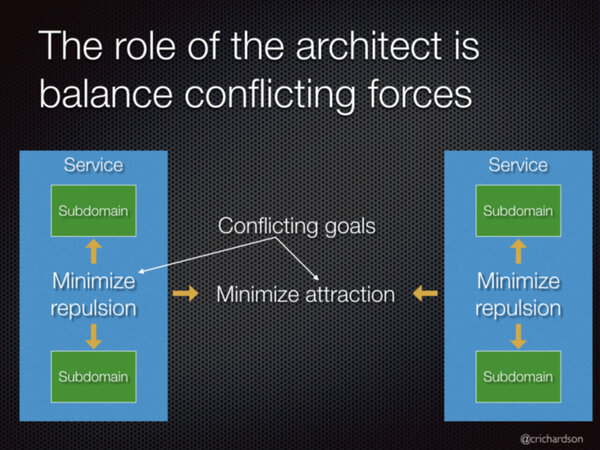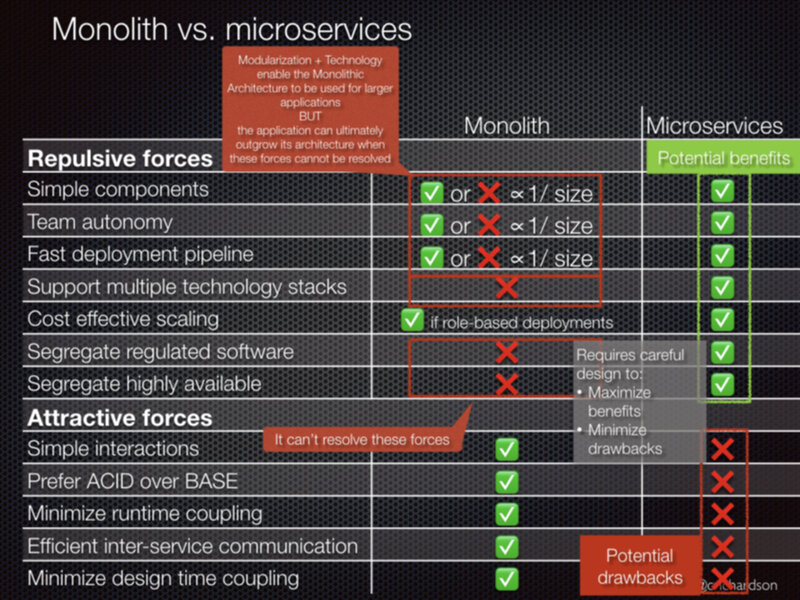iSAQB keynote - Modular monoliths and microservices: architectural patterns for rapid, reliable, frequent and sustainable development
Contact me for information about consulting and training at your company.
The MEAP for Microservices Patterns 2nd edition is now available
In October 2021, I gave a keynote at iSAQB software architecture gathering 2021. I use the metaphors of dark energy and dark matter to compare and contrast three architectural patterns: traditional monolith, modular monolith and microservices.
Dark energy vs. dark matter
- Dark energy is a metaphor for repulsive forces that encourage decomposition
- Dark matter is a metaphor for attractive forces that resist decomposition

Pick an architecture pattern that balances these forces

Comparing the monolithic architecture and the microservice architecture

Rapid, reliable, frequent and sustainable software development requires an architecture that is loosely coupled and modular. Teams need to be able complete their work with minimal coordination and communication with other teams. They also need to be able keep the software’s technology stack up to date. However, the microservice architecture isn’t always the only way to satisfy these requirements. Yet, neither is the monolithic architecture.
In this talk, I describe loose coupling and modularity and why they are is essential. You will learn about three architectural patterns: traditional monolith, modular monolith and microservices. I describe the benefits, drawbacks and issues of each pattern and how well it supports rapid, reliable, frequent and sustainable development. You will learn some heuristics for selecting the appropriate pattern for your application.
I provide consulting and training to help you use the microservice architecture effectively.


 Premium content now available for paid subscribers at
Premium content now available for paid subscribers at 




